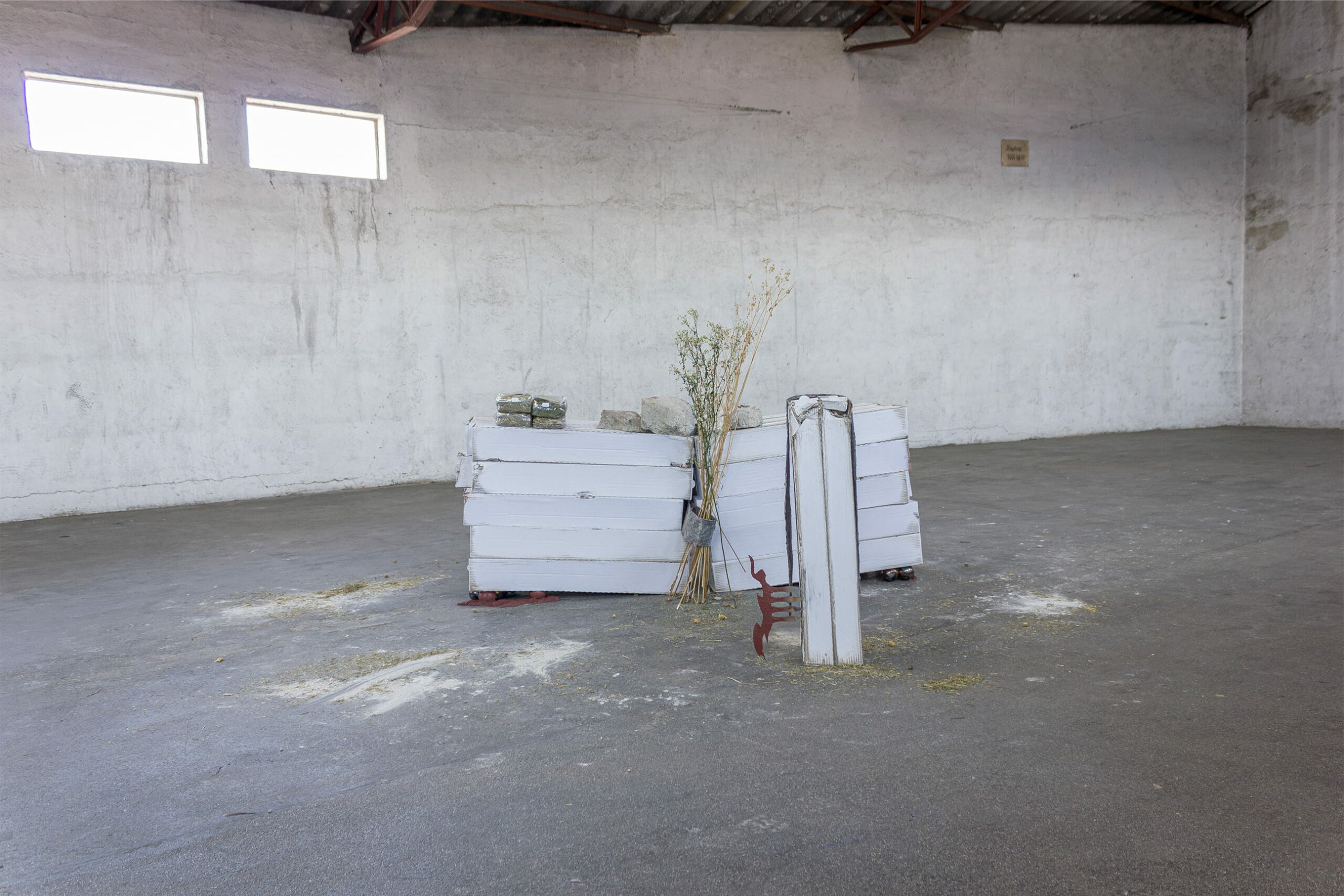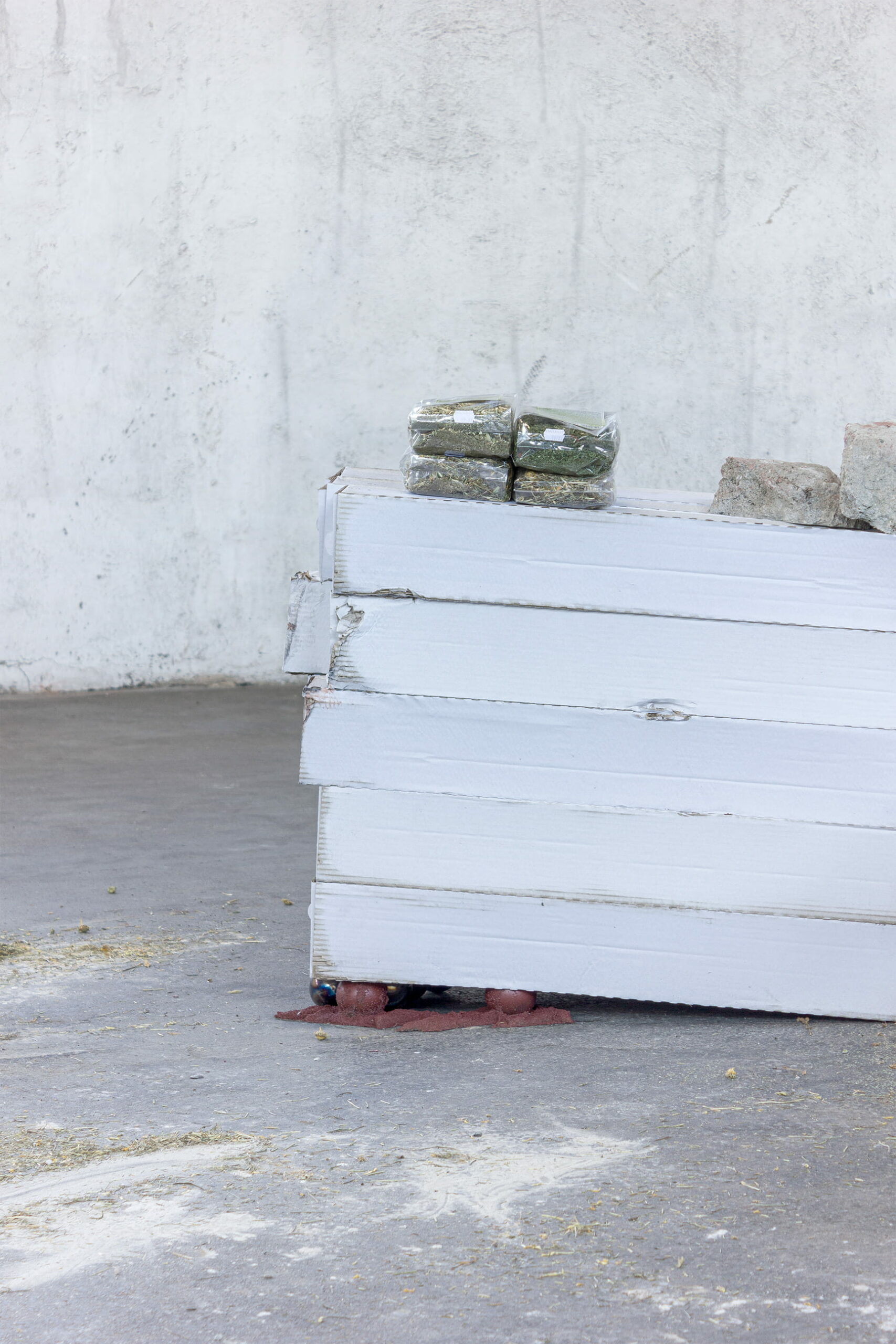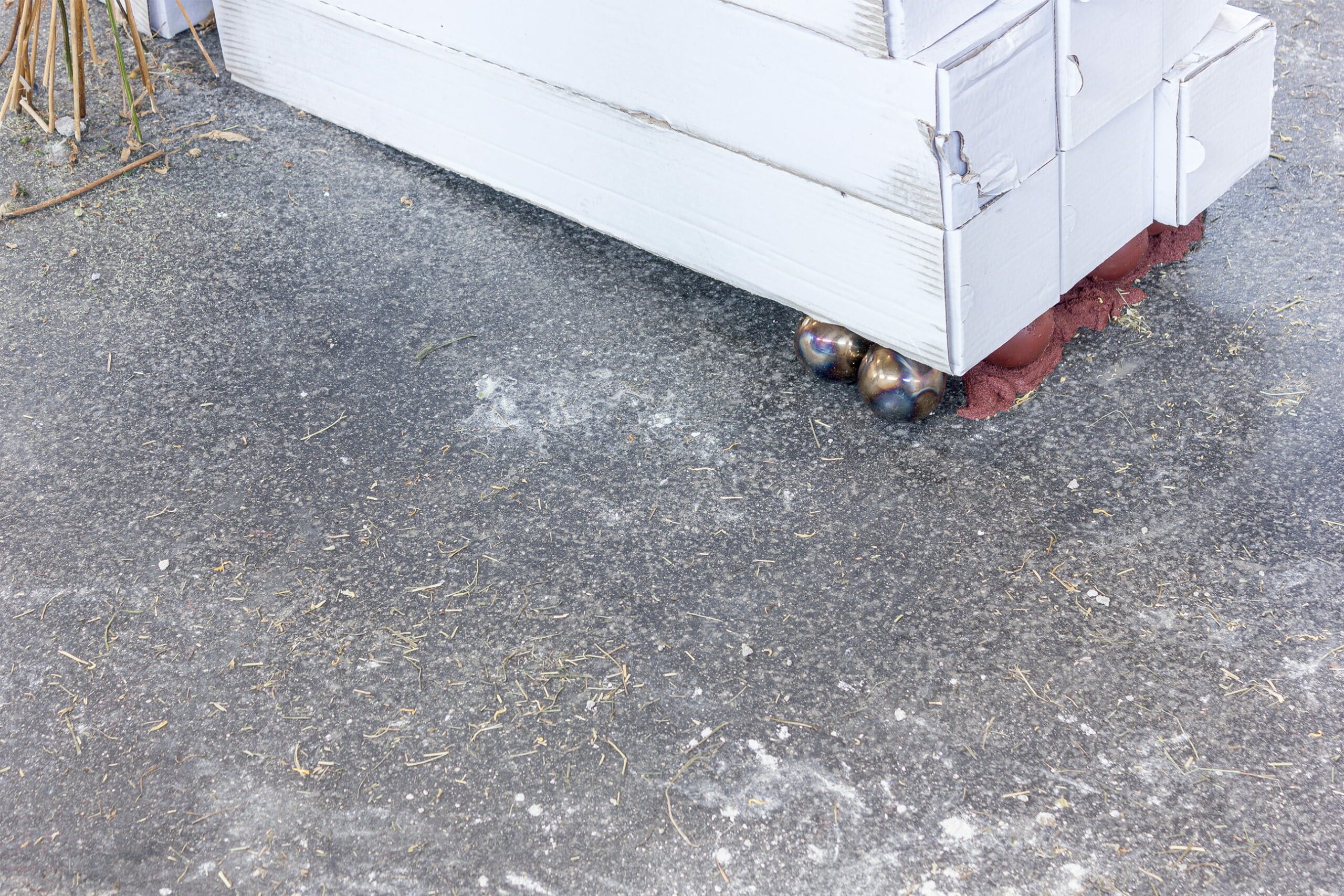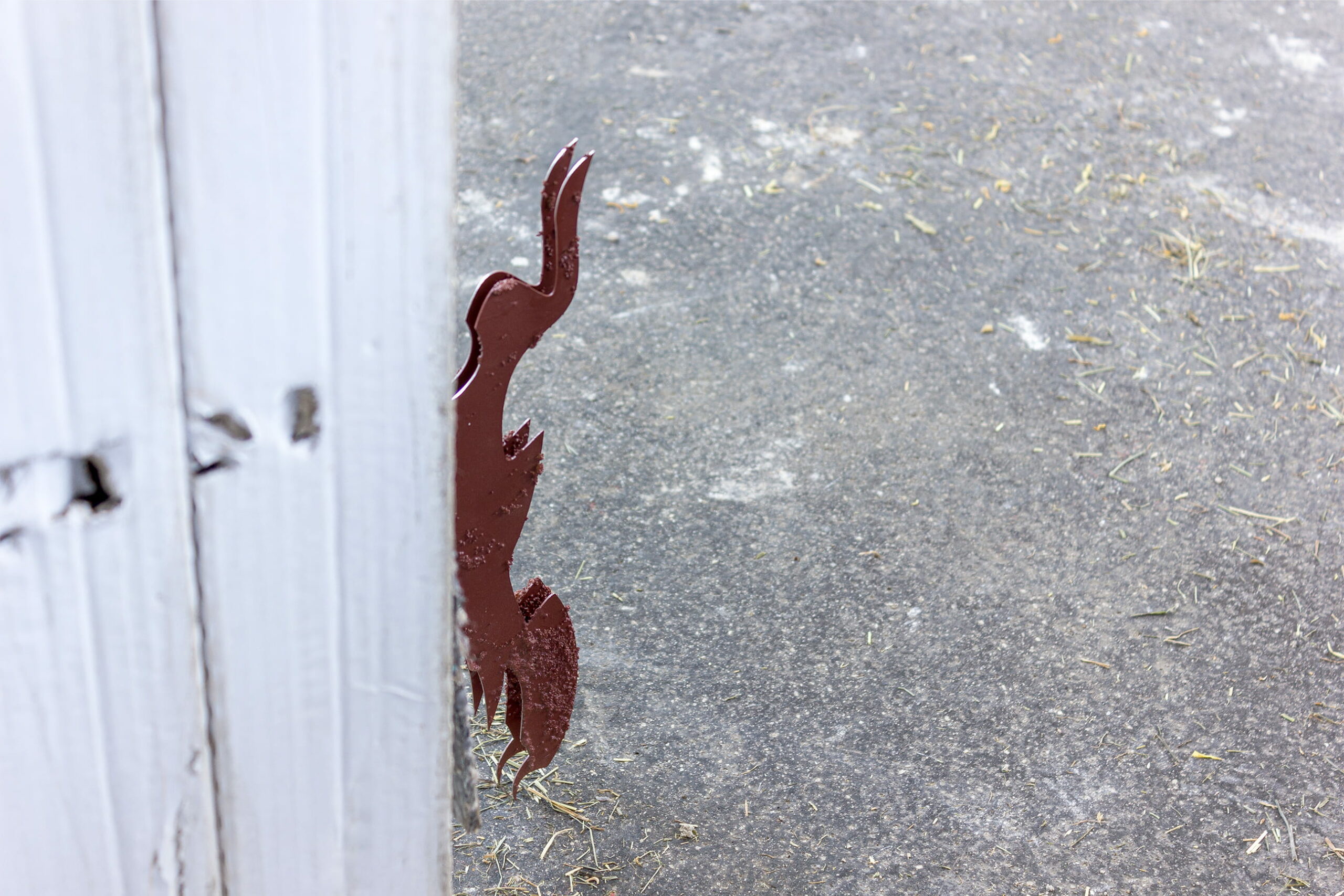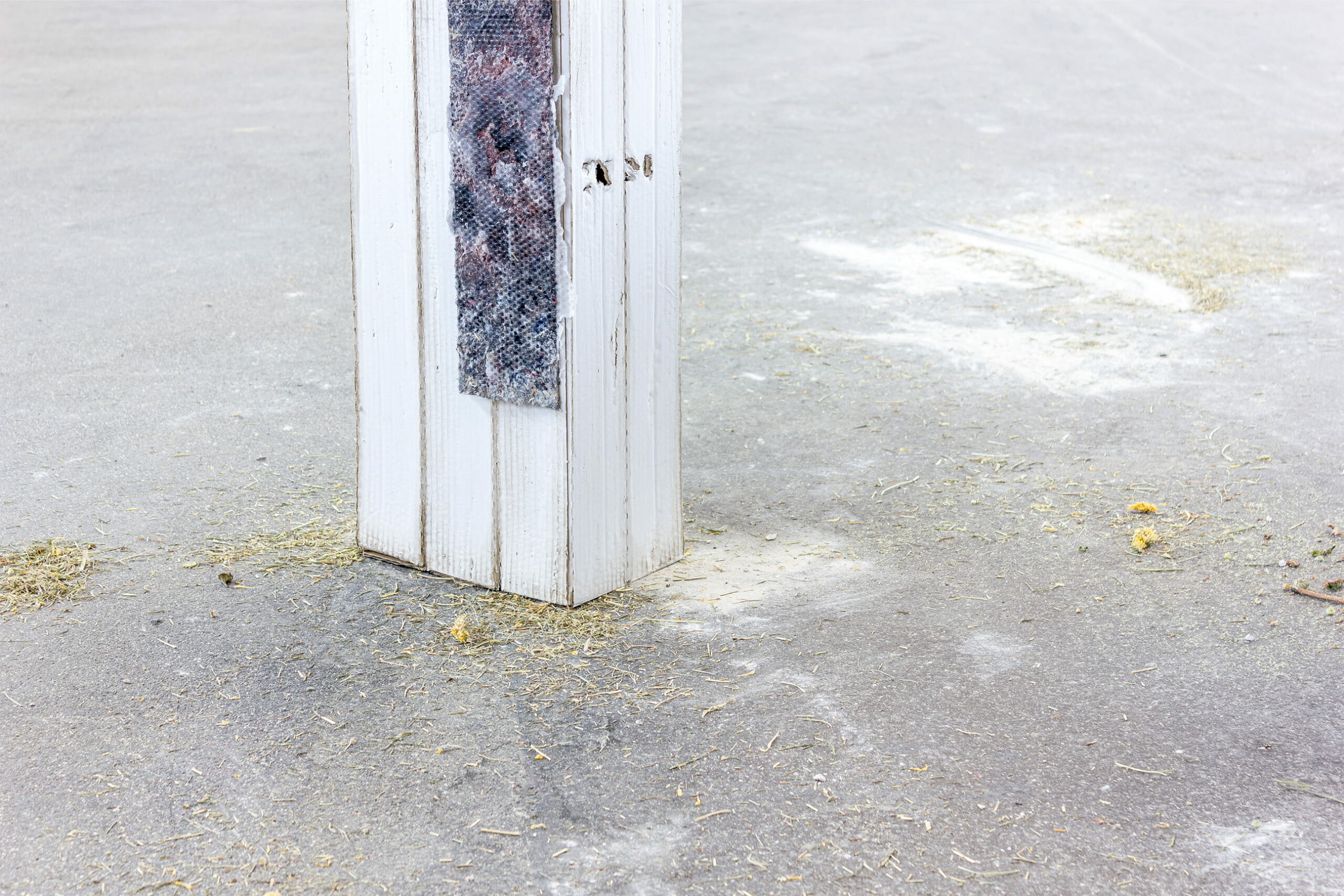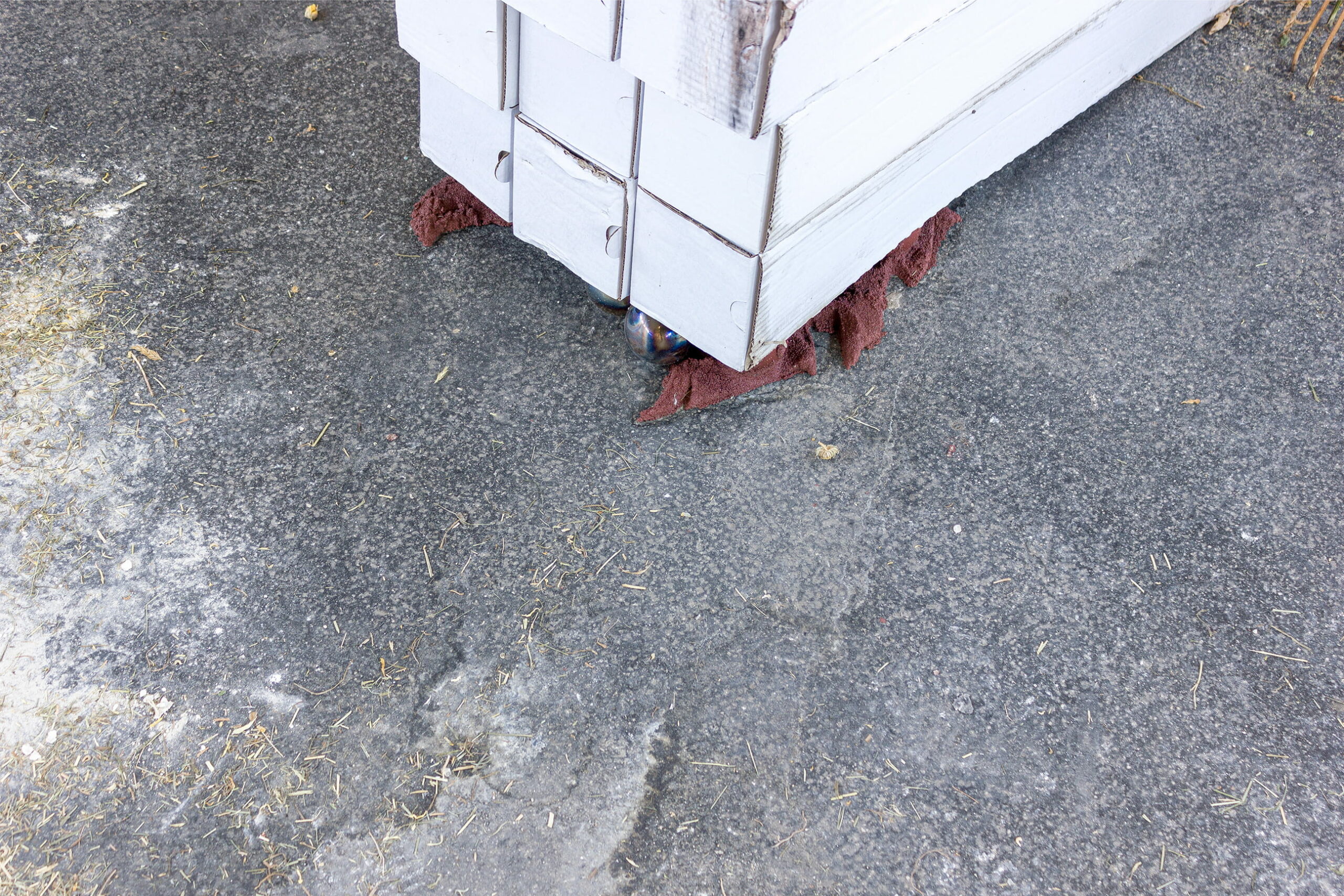MAYBE, MAYBE, MAYBE IT RAPTURES, 2021
Found Objects, Shipping boxes, Felt, Plants (Scraps), Concrete, Dust, Stainless Steel Balls, Resin, Wax, Metal, Varnish, Paint, Packaged Pet Food Grass, Flower Meadow, Carrot Weed, Water
The work refers indirectly to Beuys and takes up isolated aspects and essences. The question was to what extent Fluxus, as a quotation, could function in a translated context. Beuys used materials from everyday life and especially natural materials such as: Grease and felt, but also earth, wax, etc.... He managed, like many subsequent artists, to charge material in a forming process, to give it a vital momentum according to the respective material properties.
The material as an actor becomes a means of transport also more or less a central game to show processes of change within society. Aspects of the repetition of material oscillate ('Plight' 1985) as well as material with a warm, chaotic pole as well as a cold, shaped pole as Beuys called it in his core thesis of the plastic theory. 'Unschlitt/Tallow' (1977, Documenta), 'Fluxus Objekt' (1962) made of cardboard or 'Wie man einen toten Hasen Kunst erklärt' (1965) are remotely referenced within the work. Symbolic abstractions and disparate materials as well as forms reveal a certain theatricality. The surface treatment became a performative act.
